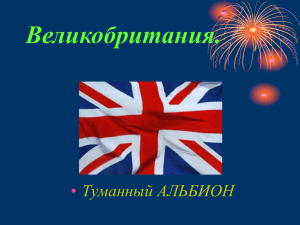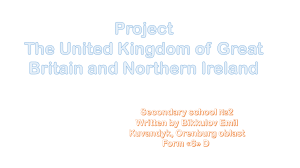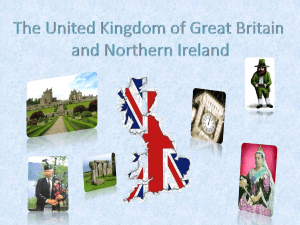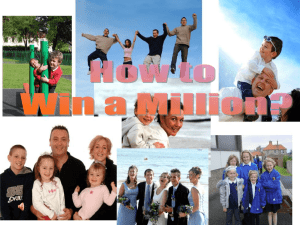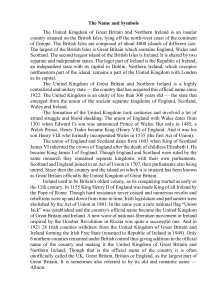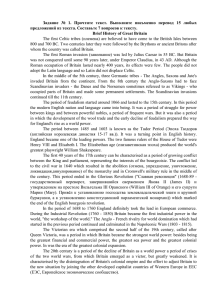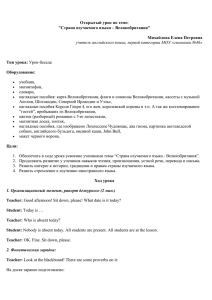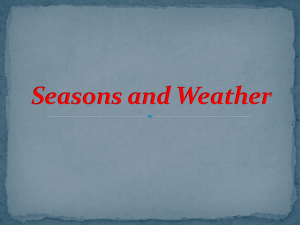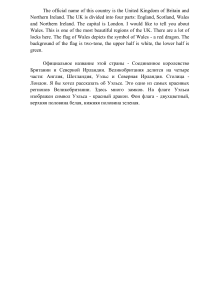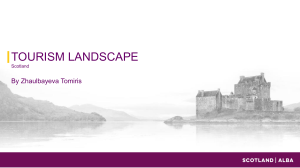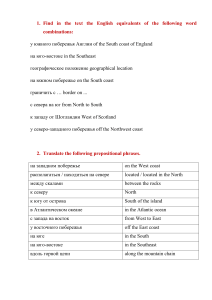Модуль №1 Файл
реклама
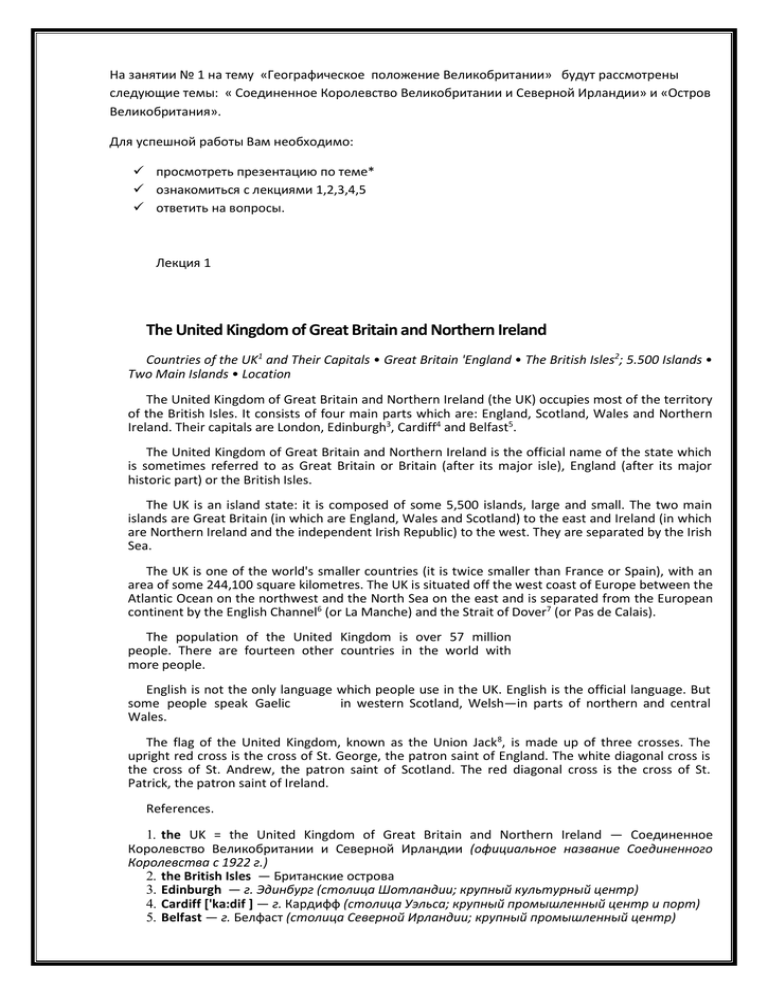
На занятии № 1 на тему «Географическое положение Великобритании» будут рассмотрены
следующие темы: « Соединенное Королевство Великобритании и Северной Ирландии» и «Остров
Великобритания».
Для успешной работы Вам необходимо:
просмотреть презентацию по теме*
ознакомиться с лекциями 1,2,3,4,5
ответить на вопросы.
Лекция 1
The United Kingdom of Great Britain and Northern Ireland
Countries of the UK1 and Their Capitals • Great Britain 'England • The British Isles2; 5.500 Islands •
Two Main Islands • Location
The United Kingdom of Great Britain and Northern Ireland (the UK) occupies most of the territory
of the British Isles. It consists of four main parts which are: England, Scotland, Wales and Northern
Ireland. Their capitals are London, Edinburgh3, Cardiff4 and Belfast5.
The United Kingdom of Great Britain and Northern Ireland is the official name of the state which
is sometimes referred to as Great Britain or Britain (after its major isle), England (after its major
historic part) or the British Isles.
The UK is an island state: it is composed of some 5,500 islands, large and small. The two main
islands are Great Britain (in which are England, Wales and Scotland) to the east and Ireland (in which
are Northern Ireland and the independent Irish Republic) to the west. They are separated by the Irish
Sea.
The UK is one of the world's smaller countries (it is twice smaller than France or Spain), with an
area of some 244,100 square kilometres. The UK is situated off the west coast of Europe between the
Atlantic Ocean on the northwest and the North Sea on the east and is separated from the European
continent by the English Channel6 (or La Manche) and the Strait of Dover7 (or Pas de Calais).
The population of the United Kingdom is over 57 million
people. There are fourteen other countries in the world with
more people.
English is not the only language which people use in the UK. English is the official language. But
some people speak Gaelic
in western Scotland, Welsh—in parts of northern and central
Wales.
The flag of the United Kingdom, known as the Union Jack8, is made up of three crosses. The
upright red cross is the cross of St. George, the patron saint of England. The white diagonal cross is
the cross of St. Andrew, the patron saint of Scotland. The red diagonal cross is the cross of St.
Patrick, the patron saint of Ireland.
References.
1. the UK = the United Kingdom of Great Britain and Northern Ireland — Соединенное
Королевство Великобритании и Северной Ирландии (официальное название Соединенного
Королевства с 1922 г.)
2. the British Isles — Британские острова
3. Edinburgh — г. Эдинбург (столица Шотландии; крупный культурный центр)
4. Cardiff ['ka:dif ] — г. Кардифф (столица Уэльса; крупный промышленный центр и порт)
5. Belfast — г. Белфаст (столица Северной Ирландии; крупный промышленный центр)
6. the English Channel-Английский канал (принятое в Великобритании название пролива
Ла-Манш)
7.. the Strait of Dover — Па-де-Кале (букв. Дуврский пролив)8. the Union Jack — государственный флаг Соединенного Королевства у состоит из трех крестов на синем фоне:
вертикальный красный крест — крест покровителя Англии Св. Георгия, белый диагональный
крест — крест покровителя Шотландии Св. Андрея и красный диагональный крест — крест покровителя Ирландии Св. Патрика. Под собственными (флагами (с одним крестом на синем
фоне) команды Англии, Шотландии и Северной Ирландии выступают на различных
международных спортивных состязаниях. The Union Jack (в верхнем левом углу) входит как
составная часть в национальные флаги многих ныне « самостоятельных государств бывшей
Британской империи, таких как Австралия, Новая Зеландия, Бермудские отрова, Кеймановы
острова,, Монсеррат, острова Фиджи и других стран.
Лекция 2.
The Island Of Great Britain
Lowland and Highland Britain1 • Mountains and Hills' The Chief Rivers • The Lake District2 * The Largest
Cities
Great Britain is the name of the largest island of the British Isles and it is made up of England, Scotland and
Wales, it does not include Northern Ireland. In everyday speech 'Great Britain' is used to mean the United
Kingdom. Geographically, the island of Great Britain is subdivided into two main regions — Lowland Britain
and Highland Britain. Lowland Britain comprises southern and eastern England. Highland Britain consists of
Scotland, most of Wales, the Pennines3, and the Lake District. The Pennine Chain extends southward from the
Cheviot Hills4 into the Midlands5, a plains region with low hills and valleys.
England is separated from Scotland by the Cheviot Hills, running from east to west.
Тhе chief rivers of Great Britain are: the Severn6, flowing along the border between England and Wales,
tributaries of which include the Avon, famed by Shakespeare; the Thames, which flows eastward to the port
of London and some others. The swiftest flowing river in the British Isles is the Spey. Part of the border
between Scotland and England hi along the lower reaches of the Tweed7, near which is made the woollen
fabric that bears its name.
There are many lakes in Great Britain. On the northwest side of the Pennine system lies the Lake District,
con-i n n i n g the beautiful lakes which give it its name. This district is widely known for its association with the
history of English literature and especially with the name of William Wordsworth (1770—1859), the founder
of the Lake School8 of poets.
The largest cities of Great Britain are: London, Birmingham, Glasgow, Liverpool, Manchester, Sheffield,
Bristol, Leeds, Edinburgh. The most important ports are: London, Liverpool, Southampton9, Belfast, Glasgow
and Cardiff.
References.
1.
2.
3.
4.
5.
6.
7.
Lowland and Highland Britain — низменная и гористая части Великобритании
the Lake District — Озерный край (живописный район гор и озер на северо-западе Англии)
the Pennines = the Pennine Chain — Пеннинские горы
the Cheviot Hills — Чевиот-Хилс (горы)
the Midlands — Мидлендз, центральные графства Англии
the Severn — p. Северн
the Tweed- p. Твид
8. the Lake School —- «Озерная школа» (литературное сотрудничество поэтов-романтиков
начала XIX в.; названа по Озерному краю, где жили поэты)
9. Southampton — г. Саутгемптон
Answer the questions.
1. What are the main countries of the UK and their capitals?
2. Why is the UK also called Great Britain, England or the British Isles?
3. Which countries of the UK occupy the two main islands?
4. What is the area of the UK?
5. Is Great Britain a large or a small country in area and in population?
6. Which is the highest point in the British Isles?
7. Which river is associated with the name of Shakespeare?
8. Which is the swiftest-flowing river in the UK?
9. What is the Lake District known for?
10. Which is the largest industrial and most densely-populated country of the UK?
11. How long is the longest river in the UK and which river is it?
На занятии № 2 будут рассмотрены темы «Население Великобритании», «Климат
Великобритании», «Флора и фауна Великобритании»
Для успешной работы Вам необходимо:
Повторить изученное на занятии № 1, приняв участие в дискуссии
Ознакомиться с материалами лекции № 3, № 4, №5
Сделать словарную работу
Talking Points
What do you know about?
1)
2)
3)
4)
5)
6)
the UK as an island state?
the languages spoken in the UK?
the chief rivers of Great Britain and their importance in the life of people?
the largest lakes in the British Isles and what they are associated with?
the countries and largest cities in the UK?
the distribution of population in the UK?
Лекция 3
Population
Early Inhabitants • The British Nation • Distribution of the Population • National Minorities • Languages
The population of the United Kingdom of Great Britain and Northern Ireland is over 57 million people. The
population lives mostly in towns and cities and their suburbs. Four out of every five people live in towns.
The distribution of the population is rather uneven. Over 46 million people live in England, over 3 million
in Wales, a little over 5 million in Scotland and about 1.5 million in Northern Ireland.
Greater London, the south and the southeast are the most densely populated areas. London's population
is nearly 7 million. Most of the mountainous parts of the UK including much of Scotland, Wales, Northern
Ireland and the Pennine Chain in northern England are very sparsely populated.
The UK is inhabited by the English1, the Scots2, the Welsh3, and the Irish4 who constitute the British nation.
The British5 are the descendants of different peoples who settled in the British Isles at different times.
The earliest known people of Britain were of Iberian6 origin. Then followed a long succession of invaders
including the Celts7, the Romans8, the Anglo-Saxons9, the Danes10 and at last in 1066 the Normans11. It was the
last time Britain was invaded.
Now there are also many people of all colours and races in the UK. These are mostly former inhabitants of
the former British colonies. These people, called 'the coloureds', came to the UK in search of better living
standards.
English is the official language of the UK. Besides standard literary English there are many regional and
social dialects. A well-known example is the cockney12 of East Londoners. The Scottish and Irish forms of
Gaelic13 survive in some parts of Scotland and Ireland.
Wales is officially bilingual, Welsh is spoken by about a fifth of its population. Welsh is the first language in
most of the western counties of Wales and at least formally has the вате status as English. Nowadays there is
a growing movement in Wales and Scotland for a revival of national culture imd languages.
References.
1. the English — англичане
2. the Scots — шотландцы
3. the Welsh — валлийцы, уэльсцы {уроженцы v уэльса)
4. the Irish — ирландцы
5. the British — англичане, британцы
6.Iberian — иберийский {иберийцы —древнейшее население Британских островов)
7.the Celts — кельты {потомки древних кельтов; большая часть ныне живет в Уэльсе, Шотландии,
Северной Ирландии, Корнуолле и на о-ве Мэн)
8.the Romans — римляне {завоевавшие Британию в I—IV вв. н. э.)
9. the Anglo-Saxons — англосаксы (общее название древнегерманских племен — англов, саксов,
ютов и фризов, завоевавших в V—VI вв. Британию и образовавших вVII—X вв. одну народность)
10. the Danes— ист. Датчане
11. the Normans — норманны {«северные люди», викинги, вторгшиеся в Англию во главе с
герцогом Нормандии Вильгельмом, который после победы при Гастингсе стал королем Англии,
Нормандское завоевание Англии в 1066 году способствовало завершению процесса ее феодализации.
Сложилась английская народность)
12. cockney — кокни, лондонское просторечие
13. Gaelic — гаэльский язык (относится к кельтской группе индоевропейских языков; к V—VI ев,
вытеснен латинским языком)
Лекция 4
Climate
Temperate Climate *Dry or Wet?* Winds • Changeable Weather • Rainfall
The climate in the UK is generally mild and temperate due to the influence of the Gulf Stream. The
southwestern winds carry the warmth and moisture into Britain. The climate in Britain is usually described as
cool, temperate and humid.
The weather is so changeable that the English often say that they have no climate but only weather.
Therefore it is natural for them to use the comparison 'as changeable as the weather' of a person who often
changes his mood or opinion about something. The weather is the favourite topic of conversation in the UK.
As the weather changes with the wind, and Britain is visited by winds from different parts of the world, the
most characteristic feature of Britain's weather is its variability.
The English also say that they have three variants of weather: when it rains in the morning, when it rains
in the afternoon or when it rains all day long. Sometimes it rains so heavily that they say 'It's raining cats and
dogs.
Rainfall is more or less even throughout the year. In the mountains there is heavier rainfall than in the
plains of the south and east. The driest period is from March to June and the wettest months are from
October to January. The average range of temperature (from winter to summer) is from 5 to 23 degrees above
zero. During a normal summer the temperature sometimes rises above 30 degrees in the south. Winter
temperatures below 10 degrees are rare. It seldom snows heavily in winter, frost is rare. January and February
are usually the coldest months, July and August the warmest. Still the wind may bring winter cold in spring or
summer days. Sometimes it brings whirlwinds or hurricanes. Droughts are rare.
So, we may say that the British climate has three main features: it is mild, humid and changeable. That
means that it is never too hot or too cold. Winters are extremely mild. Snow may come but it melts quickly. In
winter the cold is a humid cold, not dry.
This humid and mild climate is good for plants. Trees and flowers begin to blossom early in spring.
Лекция 5
Vegetation and Wildlife
Flowers • Trees and Woods • Animals••• Birds 'Symbols and National Emblems • Threats to Wildlife
The humid and mild climate of Great Britain is good for plants and flowers. Some of them have become
symbols in the UK. Probably you know that the poppy1 is the symbol of peace, the red rose2 is the national
emblem of England, the thistle is the national emblem of Scotland and the Edinburgh International Festival.
The daffodils3 and the leek4 are the emblems of Wales, the shamrock5 (a kind of clover)6 is the emblem of
Ireland.
The UK was originally a land of vast forests, mainly oak and beech7 in the Lowlands and pine and birch in
the Highlands, with great stretches of marshland and smaller areas of moors8. In the course of time, much
forest land was cleared and almost all the Lowlands outside the industrial areas were put under cultivation.
Today only about 6 percent of the total land area remains wooded.
Extensive forests remain in eastern and northen Scotand and in southeastern and western England.
Oak, elm, alm, and beech are the commonest trees in England, while Scotland bas much pine and birch.
The Highlands with thin soil arc largely moorland with heather9 and grasses. In the cultivated areas that
make up most of Britain there are many wild flowers, flowering plants and grasses.
The fauna or animal life of the UK is much like that of northwestern Europe, to which it was once joined.
Many larger mammals such as bear and wolf have been hunted to extinction, others are now protected by
law. About 50 land mammals are still found in the UK. There are many foxes. Otters are common along rivers
and streams, and seals live along parts of the coast. Hedgehogs, hares, rabbits, rats and mice are numerous.
Deer live in some of the forests in the Highlands of Scotland and in England. There are several small lizards,
two or three kinds of snakes, and several kinds of frogs and toads. You may think that there are crocodiles in
the British Isles if you read that'... a traditional jazz band led the three- I mile crocodile in a musical protest to
10 Downing Street'. But it is not a real crocodile. It is what the English usually say about schoolchildren
walking in procession, two by two.
Some 230 kinds of birds live in the UK, another 200 are
regular visitors, and many are songbirds. The most numerous
are blackbird, sparrow and starling. Robin Redbreast10 is the
national bird of the UK. The number of ducks, geese and ther water fowl has diminished during recent
years. Par-idges, pheasants and other large and rare birds are protected у law. Gulls and other sea
birds nest near the coast.
There are many threats to wildlife and ecological balance around the coast. The biggest threat to the
coastline is pollution. Even much-loved Blackpool11 is not officially safe. More than 3,500 million tons of
industrial waste is pumped into the North Sea every year. 'We cannot continue to use our seas as a
dustbin and expect our coastline to survive9, says Greenpeace12. Many other ecological problems may
be caused by privatization of the coast. The past decade of Tory rule has seen a decline in the quality of
rivers. Many of them are 'biologically dead', i. e. unable to support fish and wildlife.
References.
1.popp—мак(считается символом мира в Великобритании)
2.redrose—алая роза(эмблема династии Ланкастеров, эмблема Англии)
3.daffodil—желтый нарцисс(вторая эмблема Уэльса)
4.leek — лук-порей (национальная эмблема Уэльса)
5; shamrock —- трилистник (эмблема Ирландии)
6.clover — клевер
7.beech — бук
8.moor — вересковая пустошь, заросли вереска
9.heather—вереск(вечнозеленый
распространен Шотландии)
кустарник
напоминающими
колокольчик
цветками;
10.Robin Redbreast— красногрудая малиновка (национальная птица Британии)
11.Blackpool—Блэкпул(фешенебельный приморский курорт Великобритании, где часто проводят
конференции политических партий и профсоюзов)
12. Greenpeace — Гринпис (входящая в блок левых партий Великобритании партия «зеленых» —
активных сторонников защиты окружающей среды)
Word Games
1. Fill in the circles in the word-chain with words. The last letter of each word is the first letter of the next
word.
Up:
1) the forest tree growing in Scotland, common to northern countries
2) the ever-green shrub with small bell-shaped flowers, common in Scotland
3) the national emblem of England
4) common European tree, one of the commonest trees in England
5) sort of very small animal with strong teeth; numerous in the UK
Down:
1) a large heavy animal still found in the UK and protected by law
2) the national bird of the UK
3) the national emblem of Scotland and the Edinburgh International Festival
